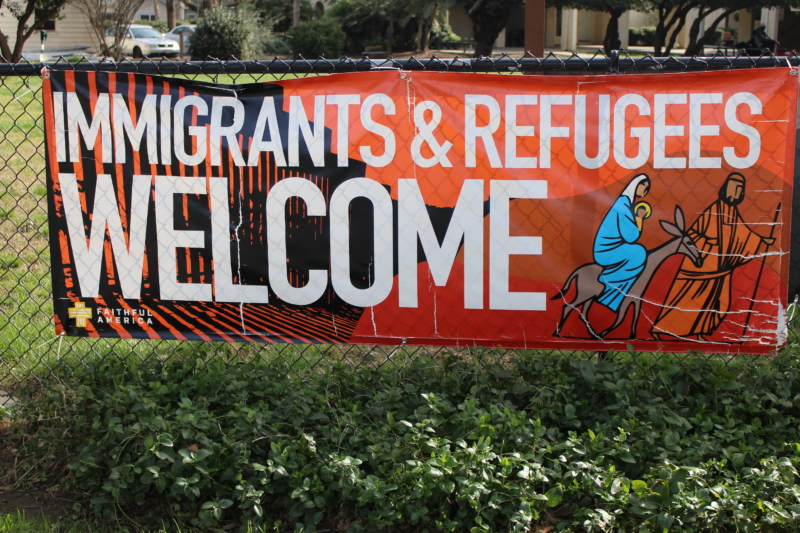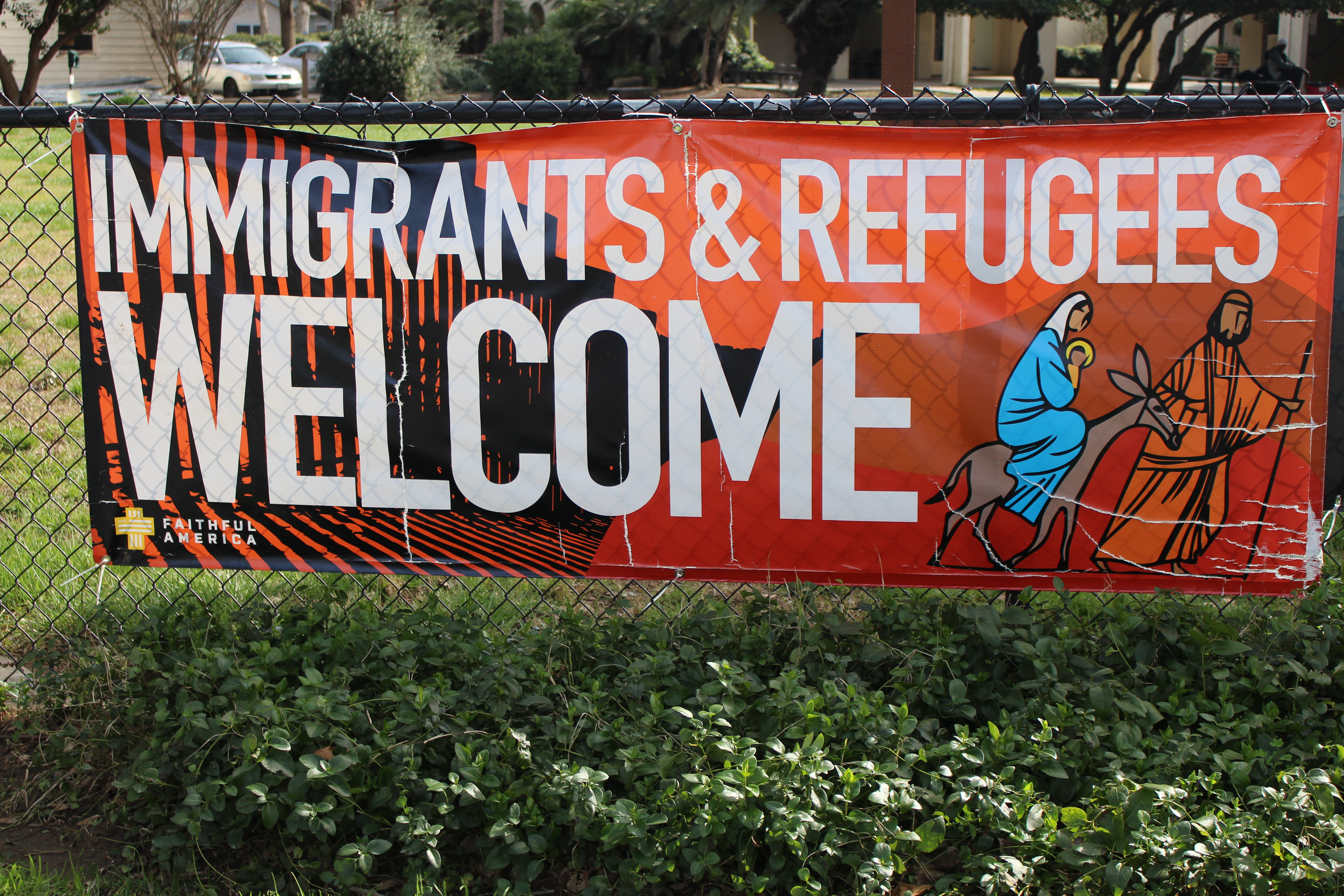OPINION: In the face of Trump, Davis needs to stay a sanctuary city

- This banner hangs on a fence outside the Davis Community Church in Downtown Davis, proudly displaying Davis’ sanctuary status which was established in 1986.
By Meghan Bobrowsky,
BlueDevilHUB.com Multimedia and Social Media Editor-in-Chief–
After Texas Governor Greg Abbott canceled criminal justice grants to Travis County for its sanctuary status, it makes sense that Davisites would fear similar repercussions for the town’s sanctuary city policy. However, values of the Davis community indicate that remaining a safe haven for undocumented immigrants is more important than receiving money from the federal government.
Davis was established as a City of Sanctuary in 1986, then reaffirmed by the City Council in 2007 and 2014, according to City of Davis’ official website. The sanctuary status means that “police officers or other city officials, during the course of duty, do not take documented status into account when they encounter individuals in Davis.” The status also grants undocumented immigrants equal access to city facilities and services.
The city website declares that documented status is a federal issue—not a local issue. For 31 years, Davis’ decision to welcome undocumented immigrants has not yielded any problems.
But President Donald Trump decided to test the strength of Davis’ sanctuary status on Jan. 25, by signing Executive Order 13768, also known as “Enhancing Public Safety in the Interior of the United States.”
The order states that “sanctuary jurisdictions across the United States willfully violate Federal law in an attempt to shield aliens from removal from the United States.” As a result, cities who do not comply will lose federal funds.
Just how Trump plans to revoke federal funding is not clear; however, there is a history of the federal government withholding money from non-cooperative states.
In South Dakota v. Dole, the Supreme Court ruled that the federal government could legally cut South Dakota’s federal funds by five percent for refusing to abide by a 21-year-old minimum drinking age. Trump may use this precedent to justify retracting federal money from sanctuary cities.
More likely though, Trump’s focus will be on withholding federal funds from counties—which he can easily accomplish through law enforcement and criminal justice grants.
Another reason he may need to target counties is that “counties, not cities, are the most important policy-makers in terms of establishing sanctuary policies,” according to the Immigrant Legal Resource Center, a national nonprofit organization that works with immigrants for equal rights. Counties can autonomously decide whether or not they want to to cooperate with Immigration and Customs Enforcement; however, ILRC describes transferring immigrants to ICE as being “an active accomplice to deportation.”
In addition, sanctuary city laws can be “undermined by county policy and practice,” making it all the more necessary to declare Yolo County a sanctuary county. Being a sanctuary city is still important, however, in sending a message to immigrants — telling them, “you are welcome in this town”.
On the state level, California has already restricted jails from holding people on ICE detainers, which have been found unconstitutional and not enforceable by warrants. On Sept. 28, 2016, Governor Jerry Brown also signed into law the Transparent Review of Unjust Transfers and Holds Act, which “further places procedural protections on ICE’s access to interrogate immigrants in California’s custody,” according to ILRC.
A slew of other states — Connecticut, Rhode Island, Vermont, Oregon, Alaska and Montana — have also taken action against local enforcement of immigration laws.
ILRC sums up the essence of sanctuary statuses on all tiers:
“Sanctuary is fundamentally about public safety: the need for everyone in the community to feel safe. […] Providing sanctuary runs through the very fabric of the United States.”
With these overlapping city, county and state policies, it is difficult to estimate how much federal money Trump could legally deduct from California altogether. In the case of Travis County, Abbott plans to withhold $1.5 million from the criminal justice division of his office.
If Trump were to follow Abbott’s precedent, California could consider enacting a statewide tax or increasing fees to collect the necessary operating funds not being provided by the federal government.
Davis should not cower before Trump’s threats and drop the sanctuary title at the hint of trouble. Instead, the principled city must hold onto its status dearly, advocate for a similar county policy and spread the love statewide.


